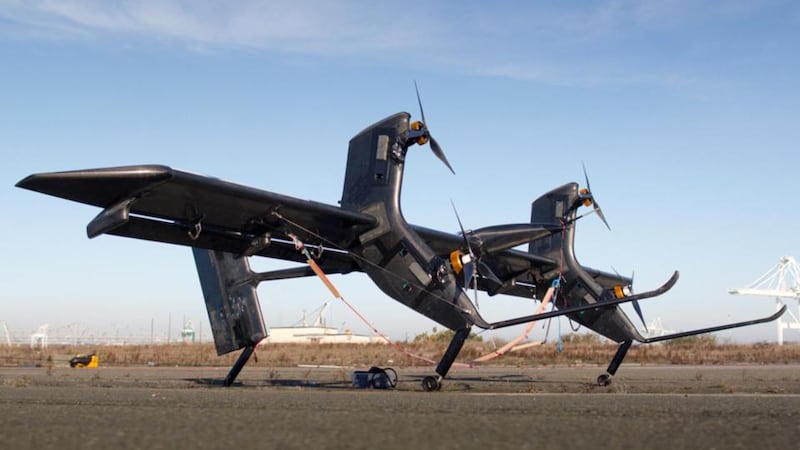The Fianna Fáil administration established the Digital Hub in 2003, in the Liberties in Dublin, to provide a national focus for innovation and to nurture digital skills for a new economy. The hub's icon is St Patrick's Tower, a 40m monolith topped by a weather vane of the saint. Built in 1805, it was the largest windmill in Europe for much of the first half of the 19th century, when it powered the George Roe & Co whiskey distillery. (The distillery converted to coal-fuelled steam power in 1860.)
Wind power is now making a comeback. Ireland's first commercial wind farm became operational in 1992, in Bellacorick, in Co Mayo. Today there are almost 200 wind farms across Ireland, which together generate nearly 25 per cent of Ireland's electricity. But the volatility of our weather requires that we not rely too heavily on wind power, so we use a combination of peat, coal and, especially, natural gas – the Corrib gas field in particular is expected to underpin energy generation for the next 15 to 20 years.
The Republic also has a 500MW interconnector with Wales across the Irish Sea, through which electricity can be imported from the UK at times of national shortfall and, likewise, exported when we have a surplus. The Republic also indirectly benefits from an interconnector between Northern Ireland and Scotland.

Brexit presents several threats to our national security, not the least of which is energy security. While the interconnection of our grids and the importation of some fossil fuels from the UK underwrite our generation capacity, the uncertainties of Brexit make it prudent to find alternatives. The European Investment Bank recently announced interest in funding a 700MW interconnector between Ireland and France, which would strengthen our ties to the Continent and reduce our dependence on the UK.
Imported fuels cost Ireland about €15.5 million a day – equivalent to about €1,200 a person each year. Our national security would be strengthened were we less dependent on imported fossil fuels – and, perhaps, were we able to export more electricity than we require domestically – if only we could depend on renewables to generate our base load. Can we innovate to overcome the vagaries of the Irish weather and so provide reliable renewable energy?
Although surface wind is fickle, at higher altitudes wind is considerably stronger and more stable, especially in Ireland, given our oceanic location in the northern hemisphere. A number of airborne wind-energy prototypes are being tested around the world, although no substantial work has been undertaken in Ireland. The altitude at which they fly makes airborne systems significantly quieter and less visually obtrusive than surface wind turbines.
Some of the prototypes, such as the Italian KiteGen project's, use kites to harness the wind's power. Kitesurfers know about the figure-of-eight paths that their kites carve into the wind. KiteGen says a park of a modest number of big computer-controlled kites, flying at least 500m high, could continuously generate as much electricity as a small nuclear power station. The torque that the kites produced on their anchor cables would drive ground-based generators. The area above the park would need to be a no-fly zone, but many existing power plants have those already, for security reasons.
An alternative approach is to fly the generators rather than keep them on the ground. A subsidiary of X, Google's R&D-focused sister company, called Makani Power – makani is Hawaiian for wind – has built a computer-controlled kite that can produce 600kW of power. It looks like a glider mounted with propellers. These rotors enable it to take off. Then they're turned off, and as the kite loops, high in the sky, the system goes into reverse: wind makes the rotors spin, so generating electricity that is passed to the ground through a tether. The kite can be landed whenever necessary by winding in the tether. Even larger kites, with higher generation capacity, are in principle possible now that the core technology has been proven.
The surface-wind-turbine industry was also pioneered by innovative companies, not least Vestas and its forerunner NEG Micon, both in Denmark. Delivering aerodynamically efficient turbines required new and key skills, in design, manufacturing, transportation and installation. Denmark created an industry from scratch. Commercial airborne turbines are now another potential inflection point for the renewables industry. They will require lightweight flight systems and smart electronics, and potentially be as large as commercial aircraft, although very much lighter. They need to be designed not only for safety but also for long operating lifetimes.
Ireland already has a unique geographic position. It also already has a unique economic position, with a combination of multinationals and highly skilled local companies. Could strategic national leadership create a new global industry here, as Denmark did with surface wind turbines? Perhaps St Patrick’s Tower can be an icon not only of a digital hub but also of a new wind-based electricity-generation industry here in Ireland – one that also strengthens our energy security.














